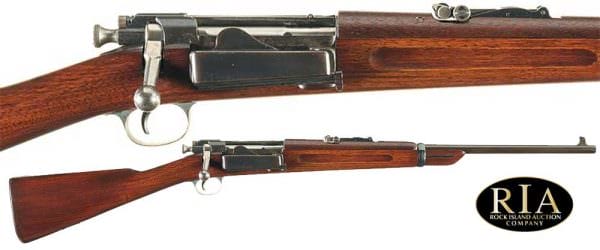By David Tong,
In this review, gun writer David Tong discusses the history behind the U.S. Krag-Jorgensen Rifle.
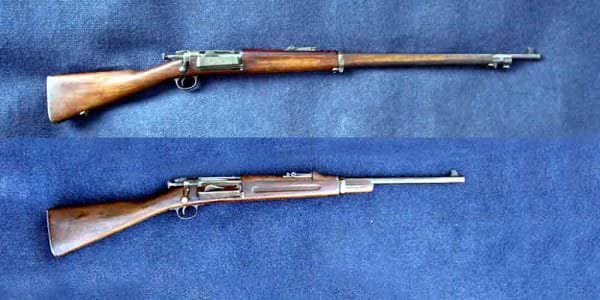
![]()
U.S.A. –-(Ammoland.com)- As all the world’s militaries did by the late 1880s, the adoption of the repeating bolt action rifle with smokeless powder cartridges of approximately 0.30” caliber completely replaced the prior 0.45” caliber single-shot rifles of the 1870s.
In those days, it was a heady time for firearm designers. Most all designs were non-detachable box magazine types save the British Lee-Enfield, and these magazines were also generally machined steel items attached to the action by the combination trigger guard/floorplate of the German Mauser pattern.
U.S. Krag-Jorgensen Rifle
One unique action that did not follow this pattern was the Norwegian Krag-Jorgensen. Named after its two designers Ole Krag and Erik Jorgensen around 1886, it featured an integral magazine that held the rounds in a semi-circle below the action in a rotary motion for feeding.
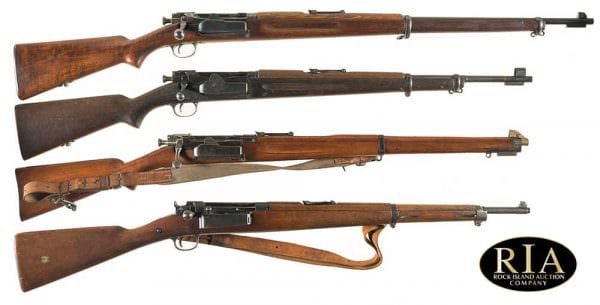
The original design was adopted by both Norway and Denmark in the 1890s and it soon caught the attention of US Army Ordnance and it was adopted by our government in 1892. It differed mostly from the original Norwegian design by a change to the magazine feed door. On the original Norwegian rifle, the door was hinged on its forward edge and operated exactly as a door on an automobile, while on the US Krag, the door was hinged on its bottom, and this may have provided somewhat less chance for dirt ingress during reloading in combat.

Most rifles of the day also had a magazine cut-off, which allowed for manual single-loading of rounds directly into the chamber while leaving the topped off magazine “in reserve” without cycling the bolt. The early Lee-Enfield SMLE and all Springfield 1903 rifles also featured a cut-off.
The Krag’s rear locking system, single-heat treatment (case-hardening), and no spring loaded magazine follower that could cause bolt drag, meant this rifle was restricted to low pressure ammunition, but it is arguably the smoothest military rifle action of them all as a result.
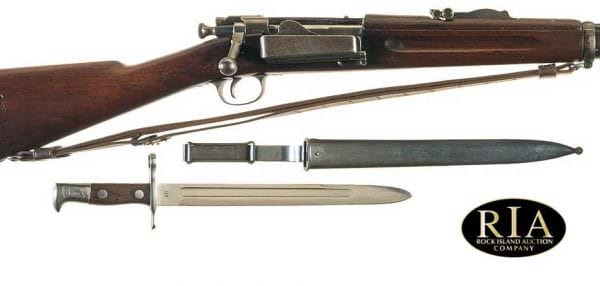
The US government subsequently adopted several updates including the Models 1894, 1896, and 1898. Many of these changes were slight changes to the bayonets, upper handguard, rear sight, and stocks but the essentials of the action remained the same. There were both full-length rifles as well as “Cavalry carbines” issued to our Army. Carbines lacked any provision for mounting bayonets, and there was also a special version for the Philippine Constabulary after the American colonialization of those islands after the Spanish-American War.
Just as the British soldier had encountered substantial problems with both the initial lack of a “charger” loading system (known more commonly here as “stripper clip”) for quick reloads, the use of round-nosed full-metal-jacketed bullets when attempting to stop hostiles, the Krag’s primarily rear locking of its action, and deference for its metallurgy limits its ballistic potential, it was the second-shortest official issue US military rifle in history, only the five years of the M14’s tenure was shorter.
Many more rifles were built than carbines, and are thus less expensive for the burgeoning collector. Approximately 475,000 rifles and carbines were built between 1894 and 1904.
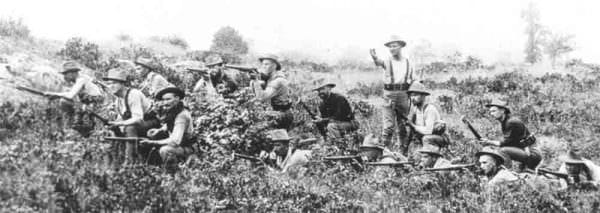
U.S. Krag-Jorgensen Ammunition
Original G.I. ammunition (“.30 Army”) was called “.30 U.S. Government” commercially, and is very rare, and it has been known as “.30-40 Krag” after the adoption of the .30-06 in 1903.

Ammunition is still available for the 30-40 Krag, though I am unaware of any manufacturer but Remington still producing it (limited) as of 2016. Most of this ammunition is still of round-nosed design, albeit in jacketed-soft-point form. The original military loading was a 220gr RNFMJ at just 2,000fps, while nominal velocity for a typical commercial 180gr. JSP loading is approximately 2,200fps, about ten percent under the .303 British round.
The design of the U.S. Krag-Jorgensen Rifle magazine and the open-topped receiver with its bolt handle track makes it very difficult and time-consuming to re-stock an original Krag into a scoped hunting rifle, not that one should actually do this to a collector’s item. Many that have been “sporterized” in the past were turned into single-shots as a result, as the late Frank De Haas described in his book “Bolt-Action Rifles.”
My first experience shooting the Krag began during my Scouting days forty years ago, and I fondly remember it being a nicely-balanced, fast-handling, and relatively light-recoiling rifle capable of hunting deer-sized game at shorter range. The U.S. Krag-Jorgensen Rifles remain so to this very day.
